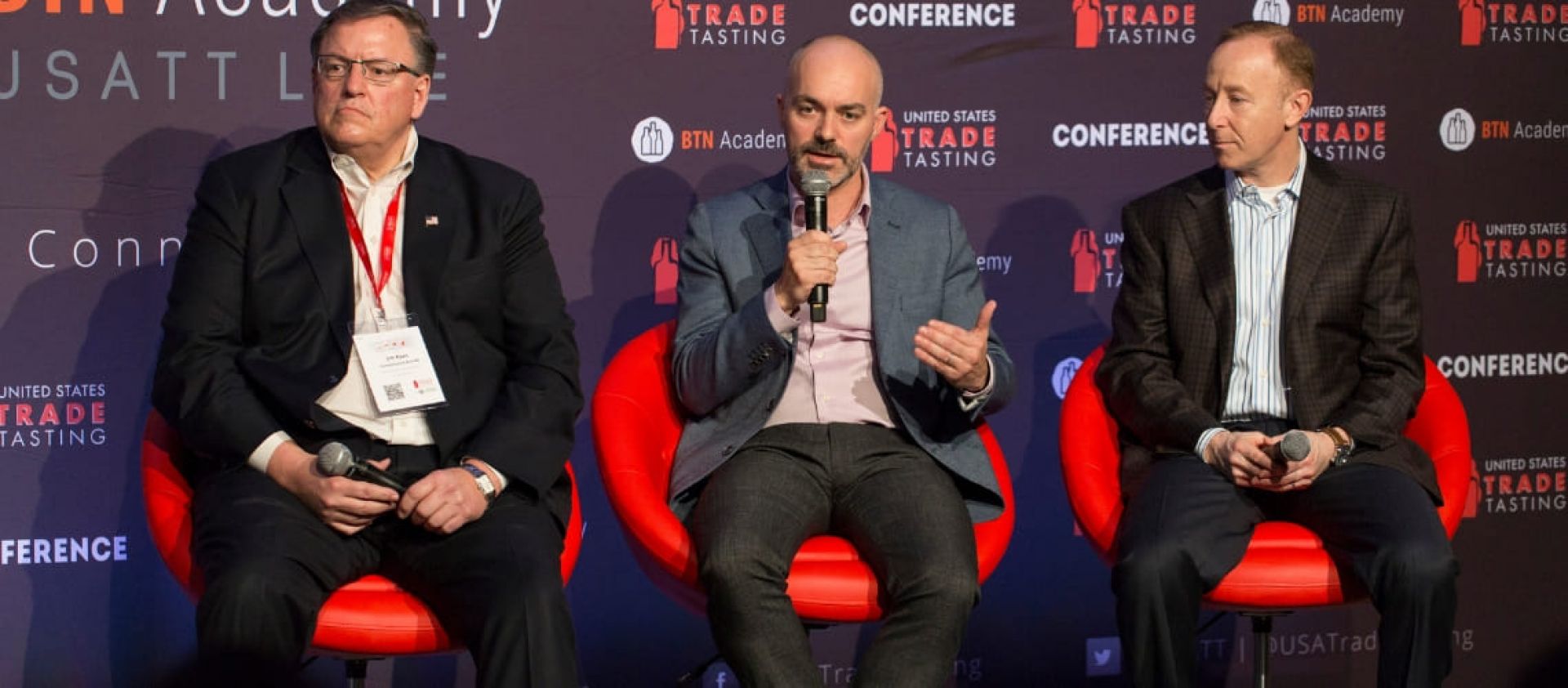
Insights
How New E-Commerce Models Are Changing the Game for Wine Brands
The new delivery-in-an-hour and e-commerce models have the potential to change the way brands can get their products to market.
At the Conference Sessions for USATT, held at the Metropolitan Pavilion, there was a Panel that comprised of Jim Ryan, SVP of the beer division of Constellation Brands, Giacomo Turone, VP of wine and spirits importer Palm Bay International and Scott Ades, CEO of The Winebow Group. They were asked questions relevant to the attending audience comprising of distributors, importers, retailers and producers of alcoholic beverages.
Please read below, one of the questions that were put forth to the panel and their corresponding answers.
QUESTION: What impact are new e-commerce and delivery-in-an-hour models having? How are they changing the dynamics of the wine industry?
There’s plenty of innovation happening in the wine and spirits industry, and new delivery-in-an-hour and e-commerce models have the potential to change the way brands can get their products to market. In order to be successful, brands have to recognize how these e-commerce models are changing customer behaviours and how they can help to influence the purchase decision. Scott Ades, CEO of The Winebow Group, notes that major wine retailers have had delivery services for years.
What’s changed, however, are the types of wines that are being delivered with these new delivery-in-an-hour services. In the case of New York wine retailer Sherry-Lehmann, they deliver what you buy in-store or online, so there’s no advertising involved to move product. In the emerging new delivery-in-an-hour business model, Ades says, it’s all based on advertising. When a customer opens up the app of a wine-in-an-hour company, they are presented with a number of different options. What the consumer sees is based on advertising dollars, and that’s an area where smaller brands can’t compete. Only the largest brands have the budget to get on the front page of an app like Drizly, which promises one-hour liquor delivery. For now, says Giacomo Turone, a VP with the wine and spirits importer Palm Bay International, delivery-in-an-hour is not a major change for the industry. The major change is with the consumer. As Turone points out, “No retailer needs more product.” Thus, a small brand is not going to be able to convince a retailer to carry them based only on the delivery-in-an-hour value proposition.
A more attractive business model, though, is the whole e-commerce model. Consumers are now headed online to find new wines. They don’t want to have to hunt in 10 different stores for a specific wine, so they want these e-commerce platforms to make it easy to find them. This may not be a big change in a major urban market like New York, where wine retailers are clustered close together and delivery to the home doesn’t matter as much. But it’s a huge difference for a market in the Midwest, where a consumer might have to drive 50 miles to pick up a bottle of wine. The participants of the recent panel discussion at the USATT Conference 2016 also discussed the structural reasons leading to the e-commerce model.
There are too many SKUs and too many physical limitations for brick-and-mortar retailers. It’s too expensive to carry a lot of inventory. But that’s not the case with these e-commerce marketplaces. In fact, some of them have an “inventory-on-demand” model where inventory is no longer a limiting factor. Turone agrees that sales via e-commerce “definitely” fits with the business models of smaller brands.
A large website can sell 300-400 cases in a very short period of time. For “unknown” brands, though, it places even more emphasis on telling their story online. If consumers are basing their purchasing decision only on what they find online, they are going to make the decision to buy based on the overall story, as well as the supporting information – such as reviews and information on where to buy. Going forward, it will be interesting to see if these new e-commerce models lead to changes in the types of wines that are sold. It could be the case that there are different audiences for different channels and platforms, and that will change the way brands need to tell their story and influence the consumer.
Hear the answer to this question at 22:27 minutes
Join the USATT 19 Conference. Meet state Importers and Distributors, Retailers and Press of USA in New York City to Grow Your Distribution.
Become a USATT exhibitor and grow your distribution in the USA. Meet importers, distributors, retailers and press. Get exhibitor information here.


